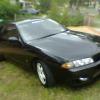Sard 800cc Twin Jets
Announcements
-
Similar Content
-
Latest Posts
-
I'm a fan of the JZX110, and the Aristo. Big cruiser cars, and with the factory cars, super comfortable and feel like you're driving an armchair! And the JZ motors are a pretty nice engine too, especially with some basic mods. The import process, and the need to be able to trust people, and the fact there's so many scammers around is what ever puts me off wanting to go through that ordeal!
-
I don't care for these at all, but at least the underside looks straight and not rusty. A good basis for a long life. Many cars from Japan have been lifted with forklifts and f**ked almost irrepairably.
-
Yes, but it's not dumb or dodgy. You can build a perfectly good boost controller from a pressure reg, a relief valve (looks same same as a reg if all from Norgren or SMC, for example) and a check valve. I ran one for years. Only superceded with EBC because I could get one for cheaps and wanted finer control. THis mod is certainly not a sketchy boost mod, provided the boost is kept below the "spin to death" threshold of the turbos.
-
With ordering the belt, you're doing water pump and the idler and tensioner at the same time too yes?
-
By joshuaho96 · Posted
This is just a dumb way of keeping the wastegate closed to make more boost. Undo it and either follow the factory setup or redo it properly. Manual boost controllers just use a spring preload to determine when to close in response to boost pressure so it no longer vents to atmosphere.
-




Recommended Posts
Create an account or sign in to comment
You need to be a member in order to leave a comment
Create an account
Sign up for a new account in our community. It's easy!
Register a new accountSign in
Already have an account? Sign in here.
Sign In Now